Frankenstein art
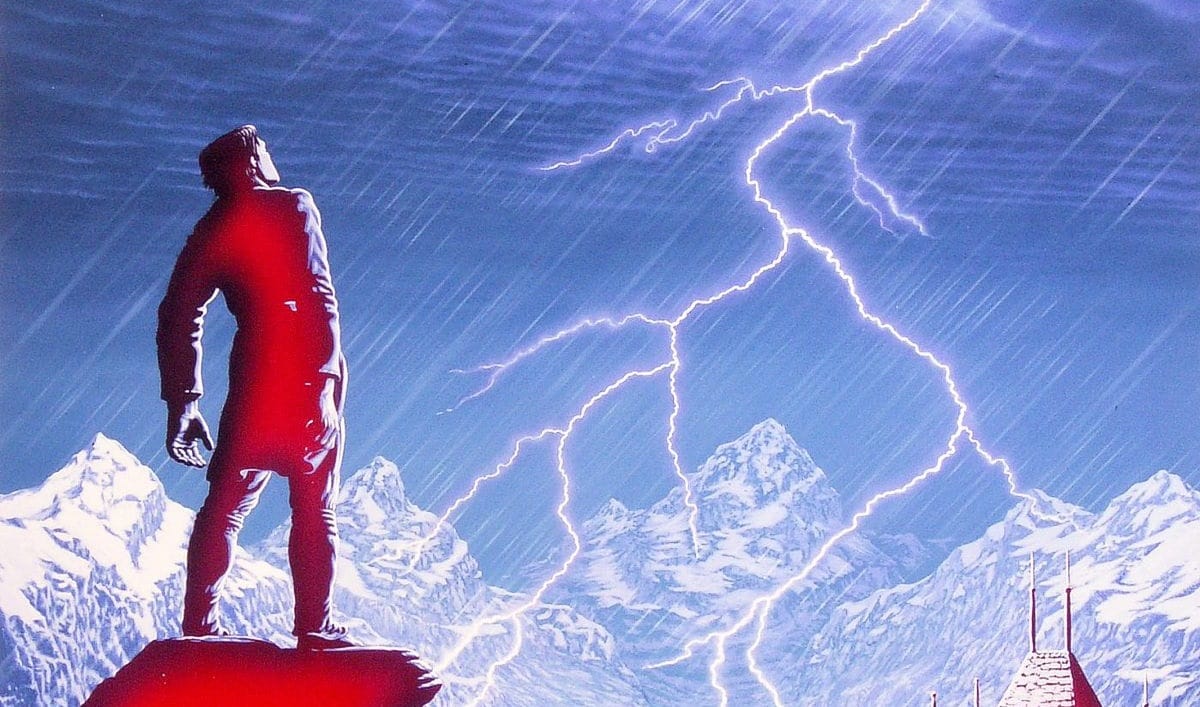
Frankenstein's monster kickstarted the science fiction genre, so it's no wonder he's a presence in retro sci-fi art. And, thanks to 1930s-50s monster movies, he has a built-in visual archetype: Green skin, a head that's flat on top, and Boris Karloff's face.
Here's a bunch of ways that the character manifested in retro illustration.
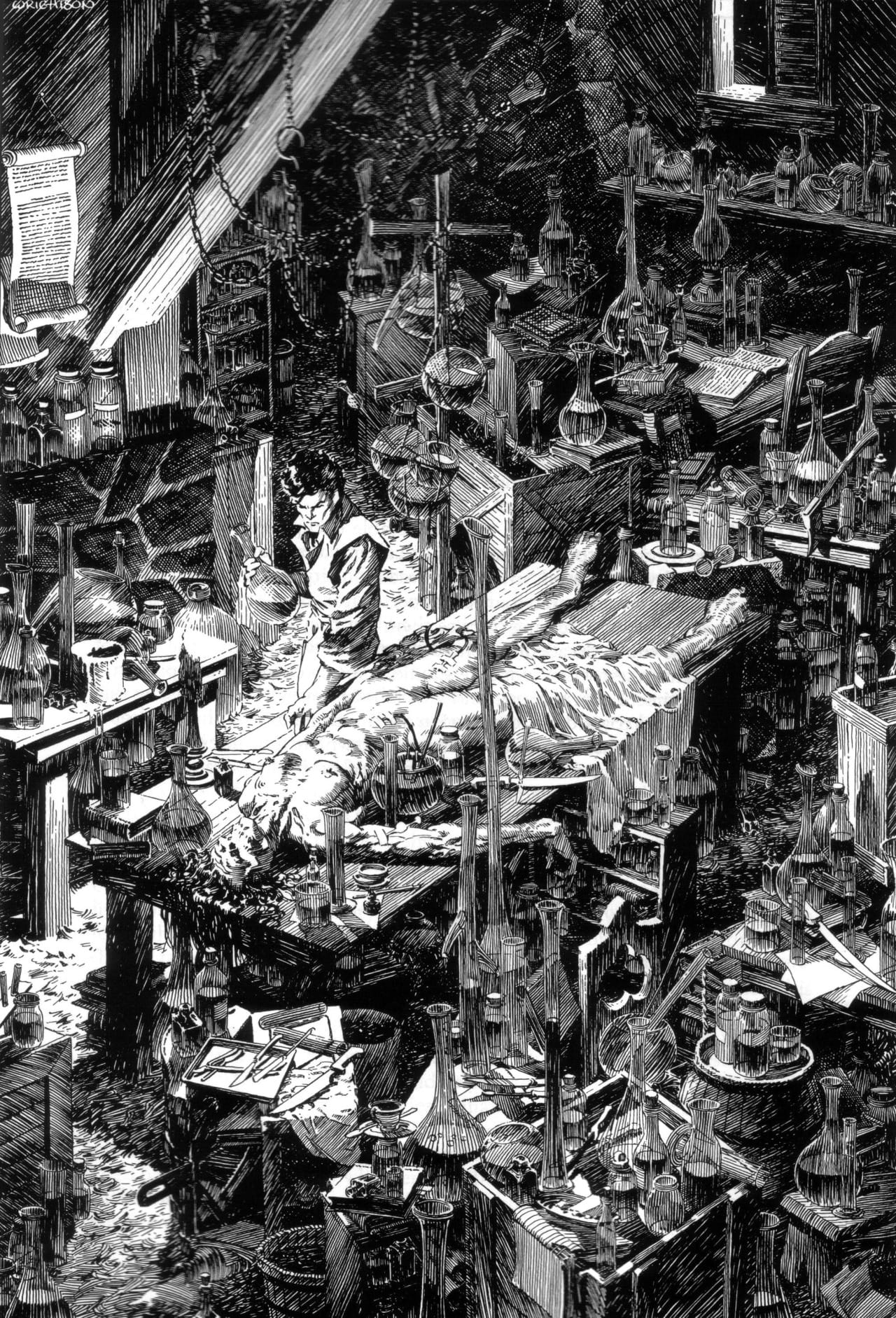
Bernie Wrightson spent 7 years making 50 painstakingly detailed pen-and-ink illustrations for his 1983 edition, Bernie Wrightson's Frankenstein.
I was quoted in this profile on Wrightson a few years ago if you want more info, but this beautiful gothic stuff is the canonical Frankenstein artwork for me.
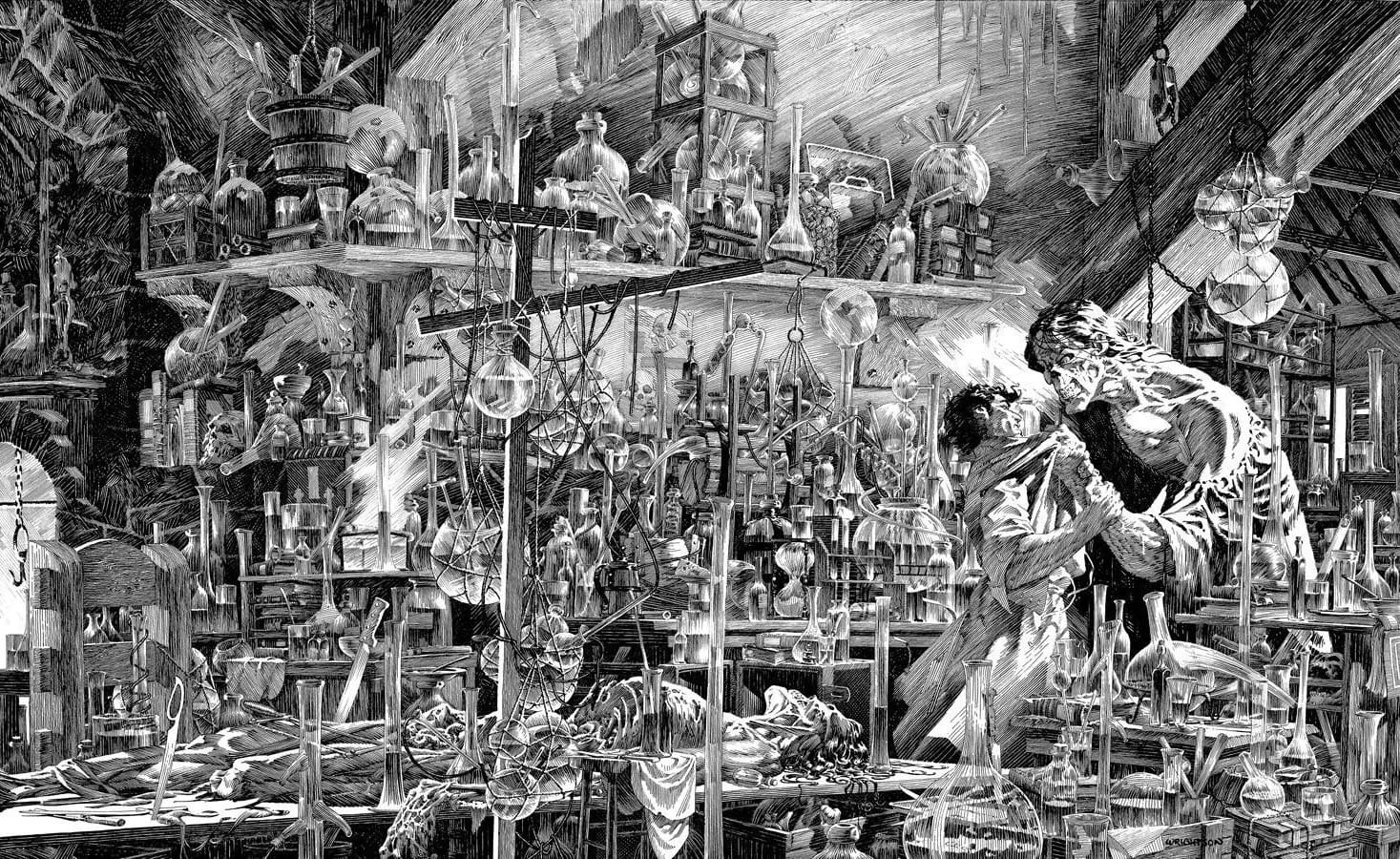
Here's a more cartoony one-page Frankenstein gag by Wrightson, published far earlier in 1969 for the fanzine Squa Tront #4:
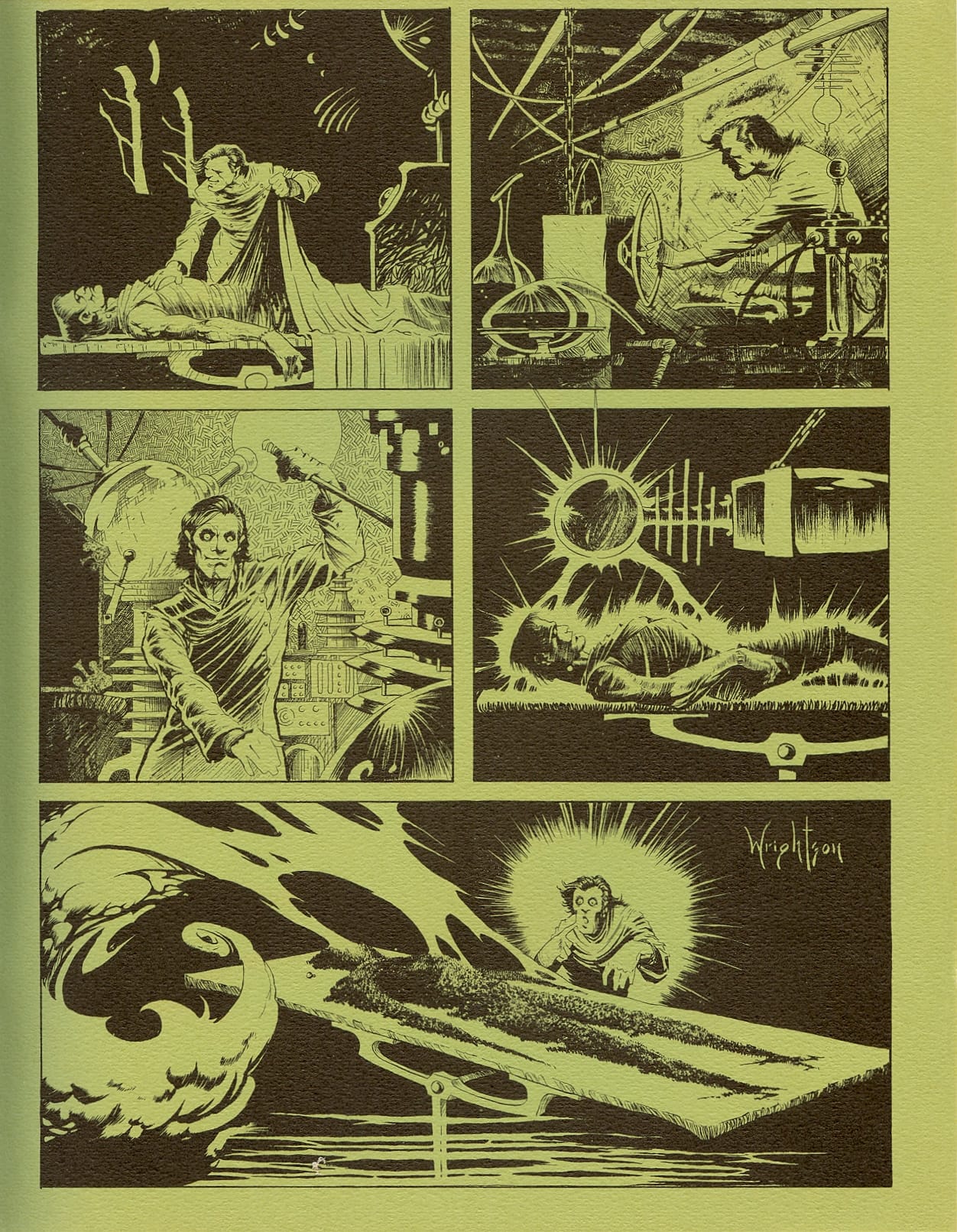
Here's a Ken Barr illustration from The Beast Within: The Art of Ken Barr, where it doesn't seem to have had further attribution.
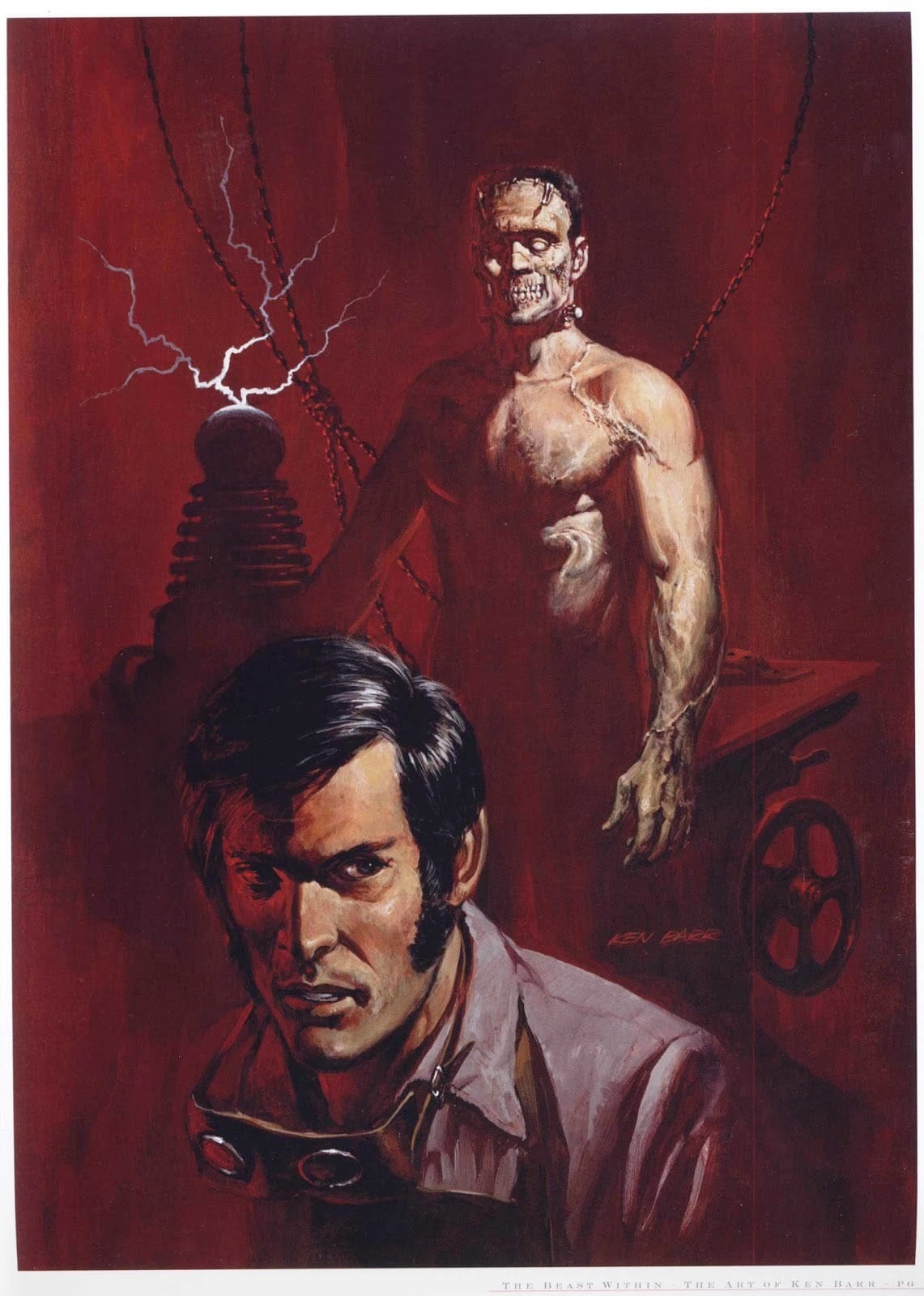
Frankenstein's towering status as a public domain name-brand monster may have been the reason he lent his name to the horror sci-fi magazine Castle of Frankenstein, which ran 1962-'75. Here's what Monster Magazines says about it:
The early issues followed the "monster mag" formula, established by it's predecessors, but the mag soon started featuring a broader spectrum of fantasy films, foreign and art house films and a more adult perspective in general and occasionally dabbled in politics. CoF would have a very strong influence on future fantasy film journalists and publishers.
Artists included Virgil Finley, Hannes Bok, Wally Wood, and, yes, Bernie Wrightson, who I assume has a spidey sense for Frankenstein media. Here are a few cool wraparound covers by Marcus Boas:
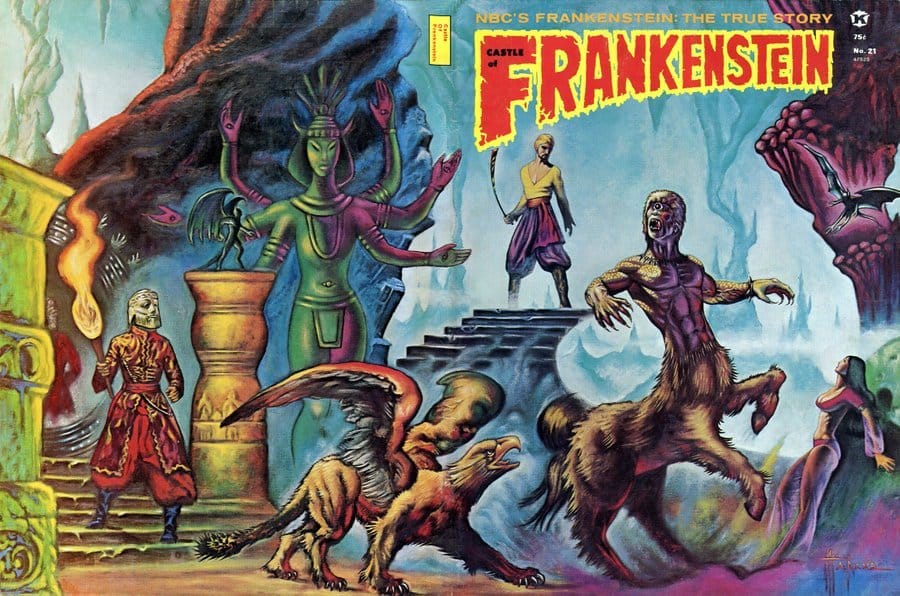
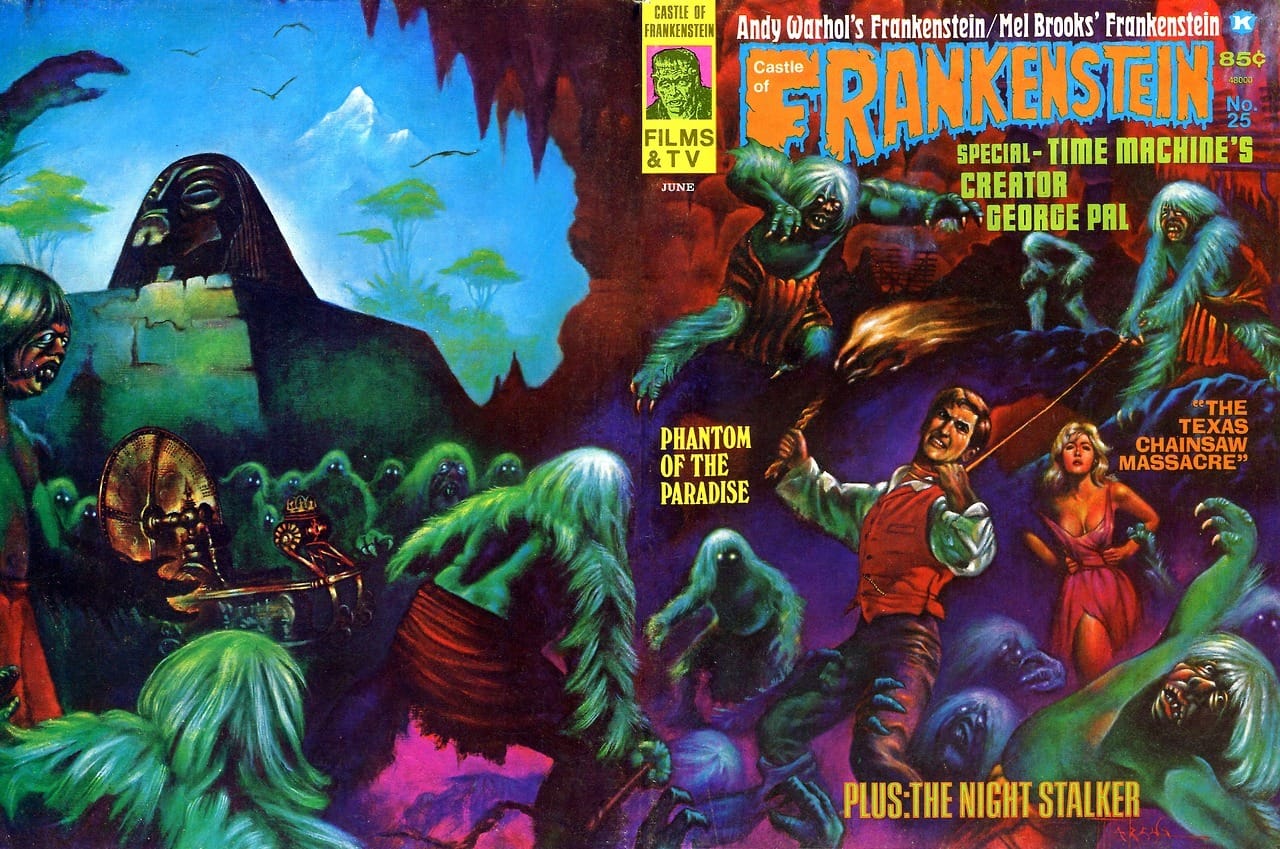
Japanese anime and entertainment magazine Animage ran this take on the monster, by Toyoo Ashida, in 1981.
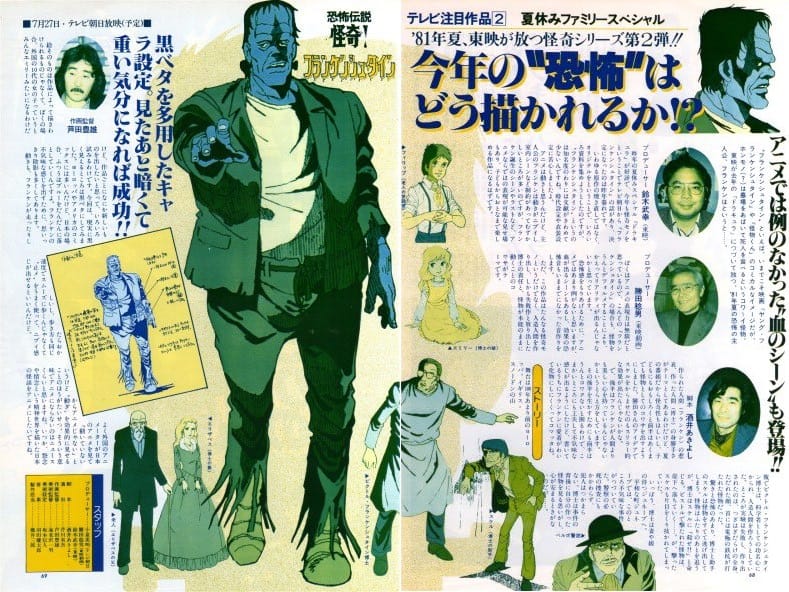
Of course noted monster movie fan and sci-fi artist Vincent Di Fate did his own version of Frankenstein's monster, for the 1989 cover to Jeff Rovin's The Encyclopedia of Monsters. The monster is pale white and has a more rounded head than in his classic depictions.

There's a whole list of pop culture characters who constantly get reinvented by every generation of writers who come after them. Sherlock Holmes and Dracula are neck and fang-bitten neck at the top, but Frankenstein isn't too far below them, easily beating also-rans like Robin Hood and King Arthur.
In the 1970s, one of those re-imaginings was Frankenstein Unbound by Brian Aldiss. Published in '73, it follows a protagonist from the dystopian future of 2020, when nuclear space war has resulted in "timeslips" that randomly send people into the past. The guy and his car wind up in 1816 Switzerland for a run-in with Dr. Frankenstein and his monster. More important than the plot is the cover art.
Paul Bacon's 1974 cover art is a great example of a "helmet reflection" style illustration:
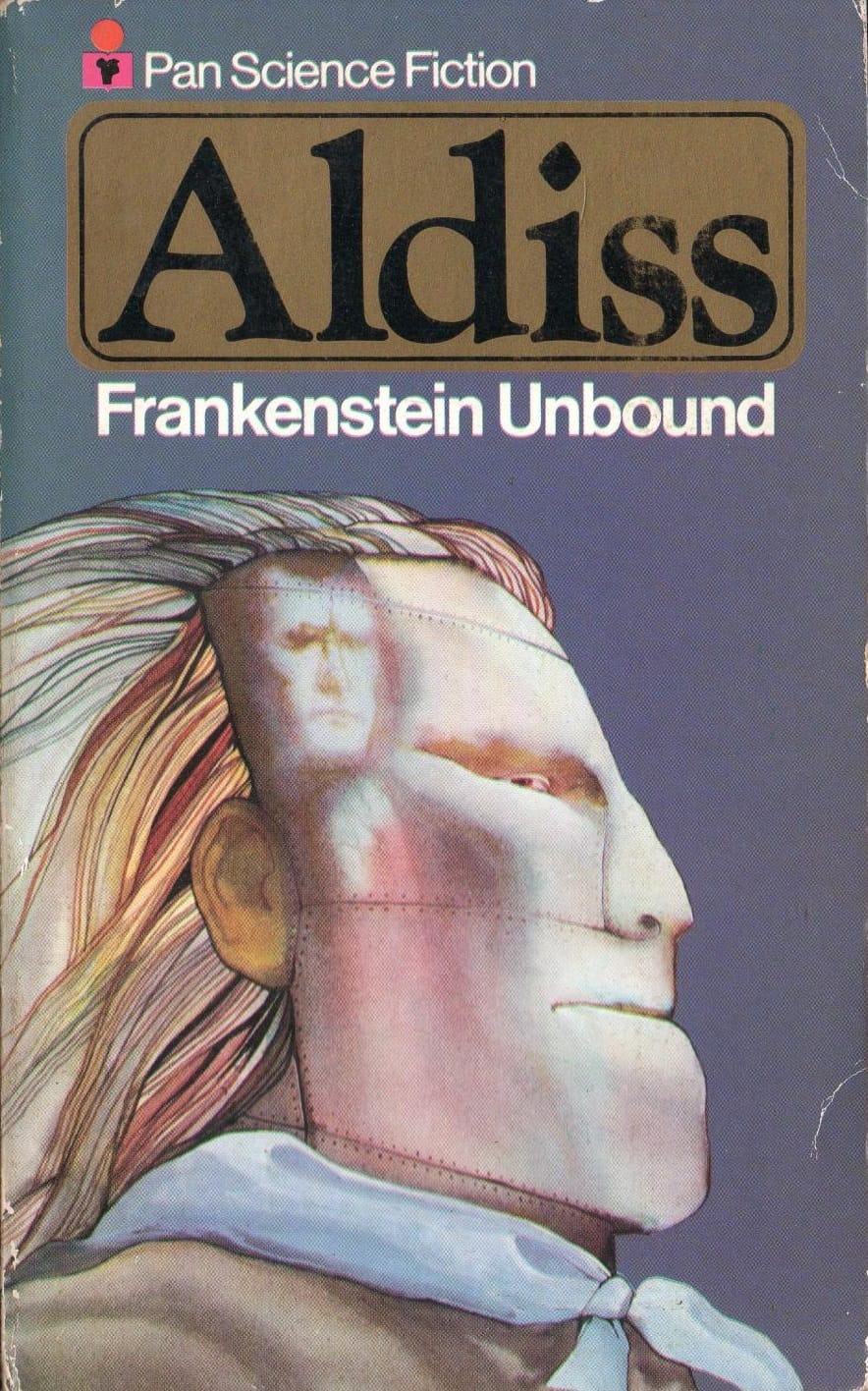
Wojtek Siudmak's 1978 French edition cover has a very unbound Frankenstein:
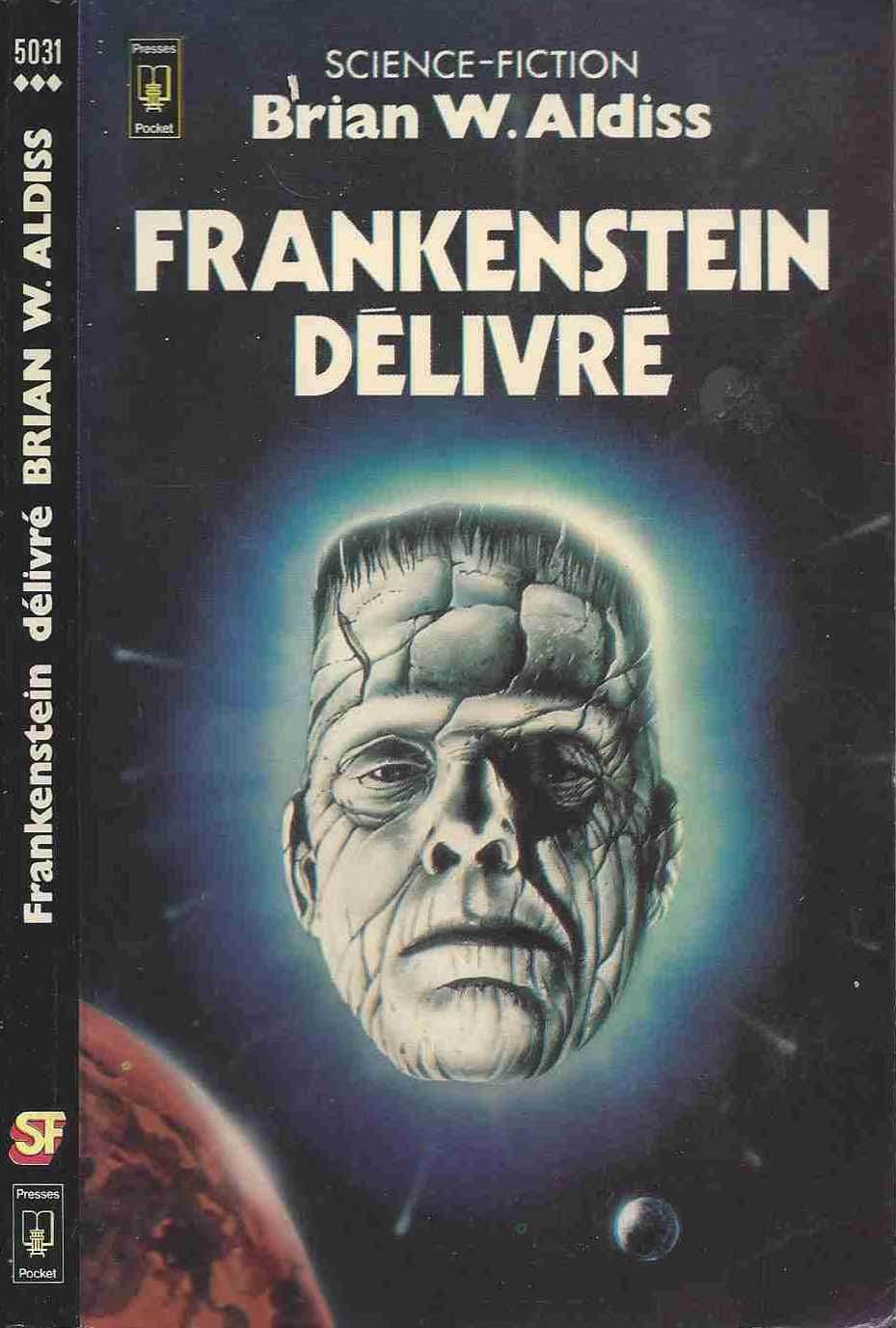
Four years after Siudmak's take, Peter Goodfellow's 1982 cover uses a similarly monster face-forward approach:
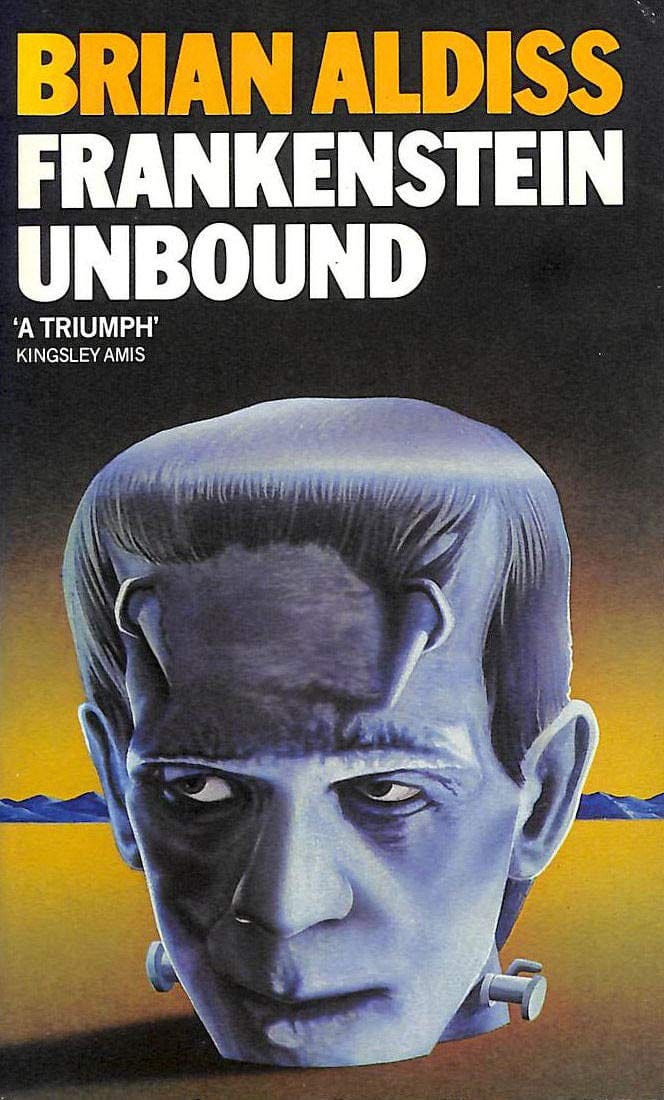
My favorite is Mark Salwowski's 1985 cover, which stylishly references the timeslip in the story. It also takes advantage of the monster's archetypal looks to keep him recognizable even while depicting him from behind.
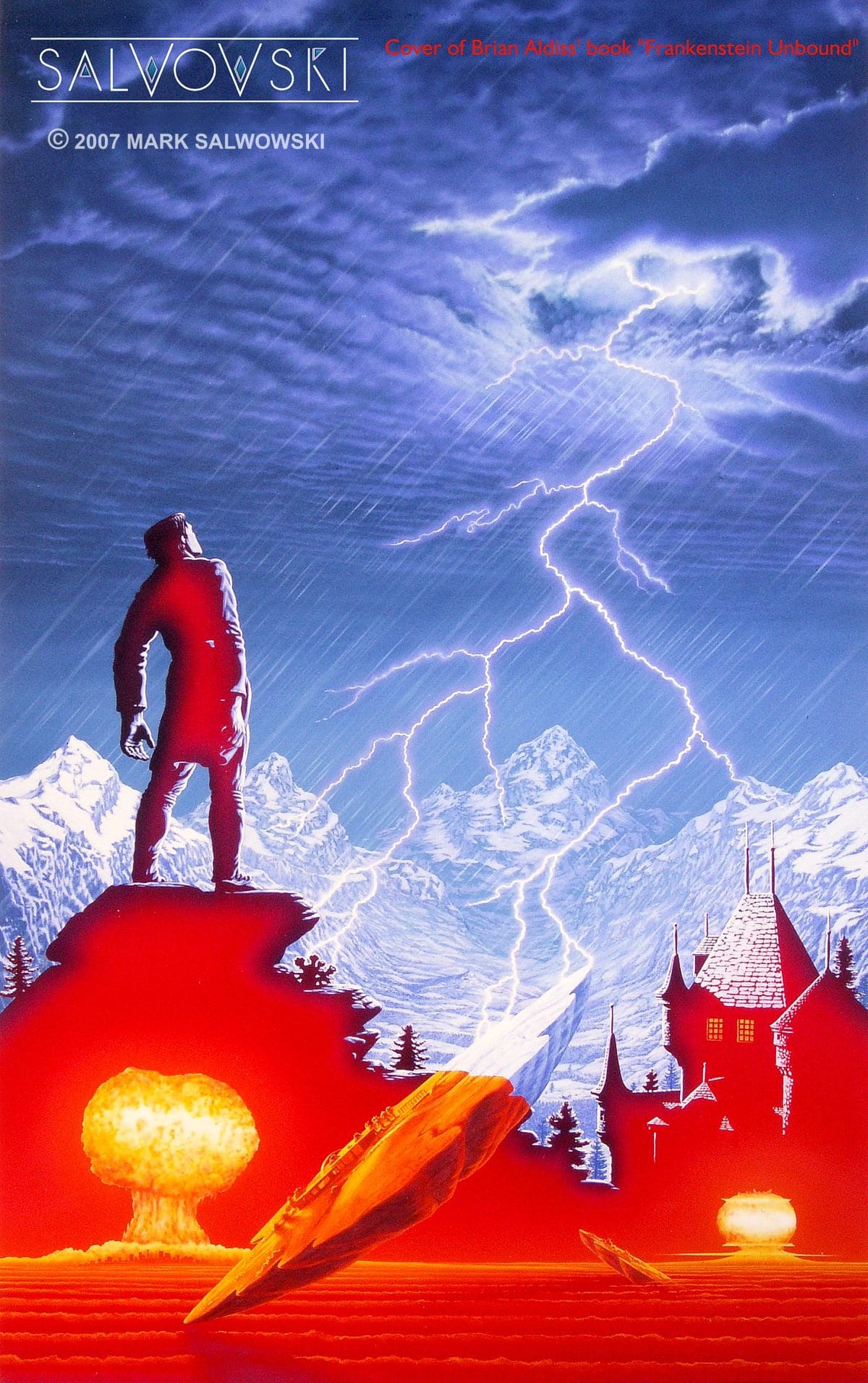
Jim Burns has an illustration titled "Frankenstein Unbound" in his 1986 art book Lightship, and it looks like it may be the car in the story, along with the timeslip, visible in the weather difference.
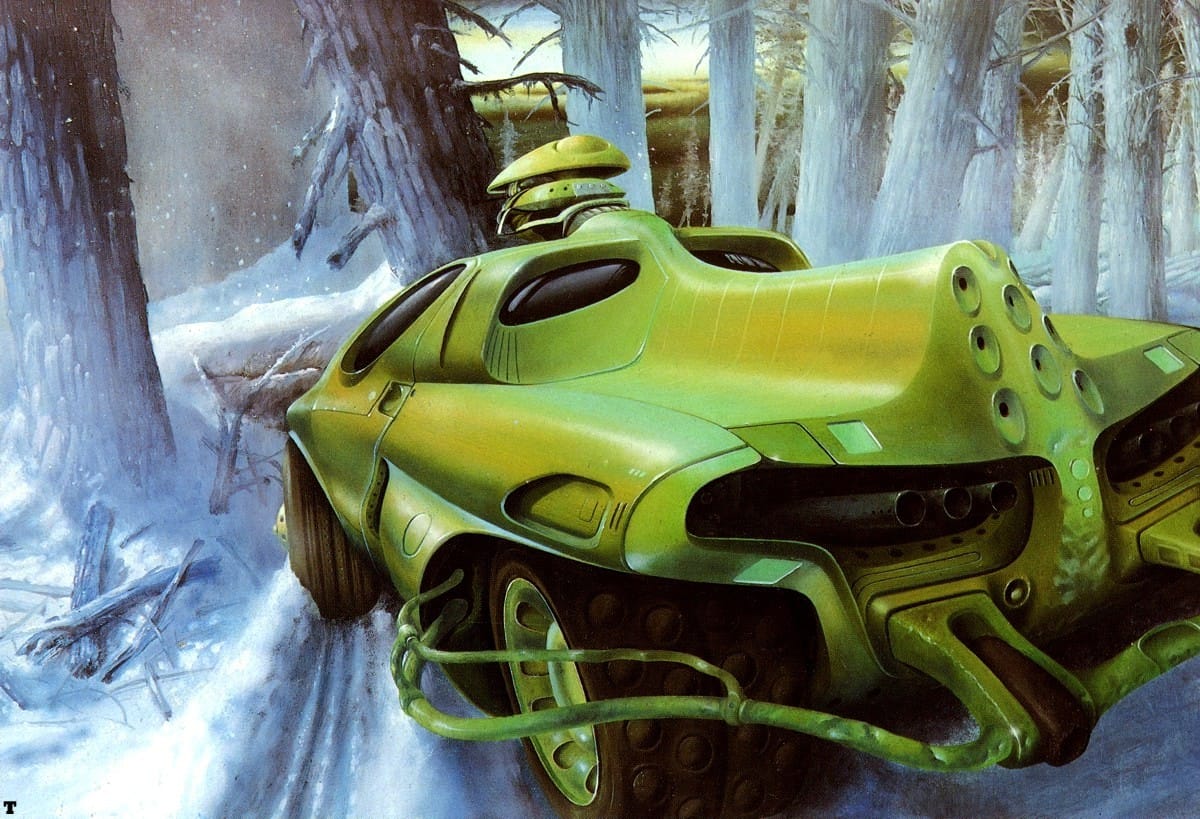
Finally, here's the discovery that got me thinking about Frankenstein today: An interview clip featuring Grateful Dead’s Jerry Garcia doing nothing but explaining how important the 1948 film Abbott and Costello Meet Frankenstein is to him.
It's apparently a segment from a 1995 AMC show called The Movies That Changed My Life. I couldn't find a lot of information about the show online, but it appears to have three episodes, with just one full episode available online in very poor quality. The episode features a total of three people, each discussing a specific film.
It's a great idea for a show; I always enjoy old movies the most when I can learn the context surrounding them and their place in history. I'd definitely watch the other two episodes if I could track them down.
Abbott And Costello Meet Frankenstein is available free on Archive.org if you're interested.